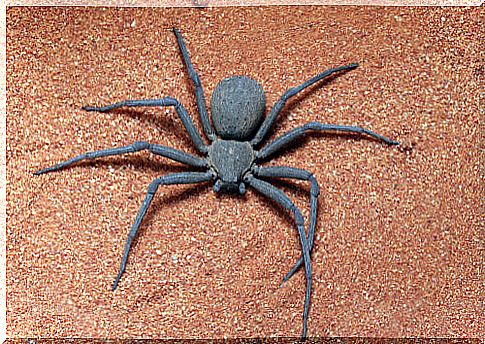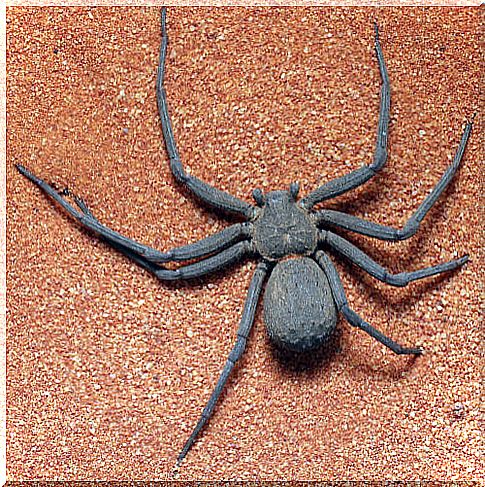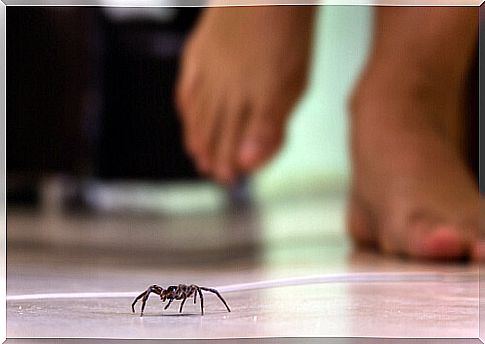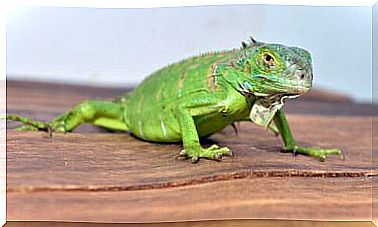The Hitman Spiders And Their True Lethality

Sicario spiders belong to the genus Sicarius , which together are better known as sand spiders, six-eyed spiders, or killer spiders. In fact, its scientific name Sicarius comes from the Latin meaning assassin. These spiders inhabit the deserts of Africa, and arid areas of South America and Central America.
At present, 124 species are known in the family of sicariids distributed in two genera: Loxosceles , with 103 species and Sicarius , with 21. All these species are considered of medical importance, since they present in their venom an agent that induces skin necrosis. Of the two genders, the venom of the hitman spiders is reported as the most toxic.
What traits are important to know about hitman spiders?
Here are some characteristics that define this invertebrate:
- They are shy in nature and very non-aggressive. Sicario spiders do not make webs: they spend their lives burying themselves in sand or earth, hidden under stones, or in a burrow. Thus, it is common for them to carry their body covered with sand particles.
- Due to their life habits, they are endemic to desert areas and arid lands.
- In terms of size, the genus of hitman spiders is the largest: their body reaches 1.5 centimeters and, adding the length of the legs, from 5 to 6 centimeters in total.
- The outer cuticle of the animal is densely covered with small hair-like spines.
- As for the color, they can be yellowish or reddish brown.
- They have 6 small eyes separated and arranged in a recurve U-shaped row.
- These spiders live for at least 12 years.

What do these spiders eat?
All known hitman spiders are carnivorous, although data on the common prey of these spiders is limited. However, there are testimonies that the species captured, both in Africa and in America, eat cockroaches, ants, crickets, scorpions and spiders in the natural environment. There is no evidence that they hunt or eat any vertebrates.
Do they deserve the reputation of murderers?
First of all, it is appropriate to clarify that the severity of a spider bite will depend on several factors:
- That the poison at the time of inoculation contains the toxic components: it is commonly ignored that the composition of the poison varies. There are comparative analyzes that suggest that this variation in venom may be correlated with geography, habitat, and prey capture strategies.
- That the amount of poison injected is sufficient to cause poisoning : poison production is limited. In the case of hitman spiders, a production of 0.15 to 0.23 milligrams has been reported under optimal “milking” conditions.
- That chelicerae are strong enough to penetrate the skin. Those of the hitman spiders are not particularly robust.
- Also, that there is the possibility of coming into contact with humans. This point is very important, since it is frequently pointed out in the medical literature that the species of sicario spiders are dispersed outside their endemic zone, in North America. However, rarely do these authors provide corroborative evidence that this actually happens: without capture of the spider, the bite is a guess.
Is it common for this spider to inhabit the human environment?
For this article, we did not find reports of captures of hitman spiders in urban settings. In the case of spiders of the genus Loxoceles, from the same family as the sicarids, there are reports:
- In 1970, studies mention having collected 5,449 Loxoceles laeta from 645 Chilean households, however no poisonings were recorded.
- Similarly, in a home in Kansas, United States, 2,055 Loxoceles reclusa were collected in a period of 6 months. Despite the staggering number, no one in the family of four had suffered a noticeable poisoning in six years of occupying the home.
Thus, there is evidence that the risk of being bitten by spiders of this family is small even in heavily infested sites.

What to expect if a hitman spider bite does occur?
It is important to know that there are several categories of bites from these spiders:
- Not remarkable: that is, it takes very little damage, and progresses by self-healing.
- Mild reaction: presents with redness, itching, is a mild lesion but typically progresses by self-healing.
- Dermonecrosis: a necrotic skin lesion occurs, considered by many to be the typical reaction. The study of the venom of these spiders has identified a component of the venom as responsible for this injury: sphingomyelinases D (SMases D). They are a range of enzymes that catalyze the hydrolysis or breakdown of the lipid membrane of cells.
- Systemic or viscerocutaneous : it affects the vascular system, it is very rare and potentially fatal.
In addition to spider venoms, these enzymes have also been isolated from bacteria and fungi.
In a non-endemic region of hitman spiders, what can cause dermonecrosis?
There are many diseases that manifest with necrotic skin lesions, but, unfortunately, there is a lack of knowledge. In fact, expert arachnologists think that cutaneous loxoscelism is diagnosed much more frequently than it should be.
Some of the reported misdiagnoses include Lyme borreliosis, chemical burn, anthrax, and methicillin-resistant Staphylococcus aureus infection, among others.









